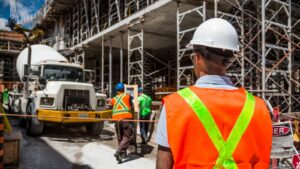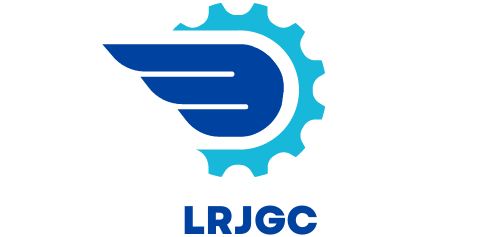The construction industry is undergoing a transformative shift, driven by emerging trends in construction procurement practices. As technology advances and sustainability becomes a priority, construction procurement is evolving to meet new demands. These changes are not just reshaping how projects are executed but also how stakeholders interact and collaborate.
From the integration of digital tools to the emphasis on green building materials, current trends are setting new standards in efficiency and innovation. Companies that stay ahead of these trends gain a competitive edge, ensuring they can deliver projects on time, within budget, and with minimized environmental impact.
Trends In Construction Procurement
Trends in construction procurement are continually evolving, driven by technological advancements, sustainability needs, and integrated approaches. These trends transform how projects are delivered, focusing on efficiency, collaboration, and environmental impact.
Digitalization And Technology Adoption
 Digital tools significantly impact trends in construction procurement, promoting efficiency and accuracy. Building Information Modeling (BIM) helps streamline project planning and execution. Cloud-based platforms improve communication, document sharing, and real-time updates, enhancing overall project management. Drones and augmented reality (AR) provide innovative ways for site inspections and progress tracking.
Digital tools significantly impact trends in construction procurement, promoting efficiency and accuracy. Building Information Modeling (BIM) helps streamline project planning and execution. Cloud-based platforms improve communication, document sharing, and real-time updates, enhancing overall project management. Drones and augmented reality (AR) provide innovative ways for site inspections and progress tracking.
Integrated Project Delivery
Integrated Project Delivery (IPD) emphasizes collaboration among all stakeholders from the project’s inception. This method aligns goals and incentives, encouraging teamwork and shared responsibilities. It reduces risks, improves cost management, and ensures timely project completion. Technology integration facilitates IPD by enabling seamless communication and data sharing.
Benefits And Challenges Of Trends in Construction Procurement
Benefits
-
Efficiency Enhancement

Digital tools streamline project management, reducing turnaround time and errors. Building Information Modeling (BIM) facilitates detailed planning and coordination. Cloud-based platforms ensure real-time access to project data. -
Sustainability Improvement
Adoption of eco-friendly materials reduces environmental impact. Life Cycle Assessment (LCA) tools guide sustainable procurement decisions. Green building certifications increase project value and marketability.
-
Technology Integration
Integrating new tools can be complex. Small firms may lack resources for comprehensive tech adoption. Training employees on digital platforms requires time and investment. -
Regulation Compliance
Evolving regulations demand ongoing compliance efforts. Sustainable practices may require adherence to strict guidelines. International projects face diverse regulatory landscapes.
Case Studies And Examples of Trends in Construction Procurement
Digital Tools In Action
In 2019, a major infrastructure project in the UK used Building Information Modeling (BIM) to streamline communication and reduce errors. The project, valued at $1 billion, saw a 20% increase in efficiency due to BIM’s integration. Stakeholders accessed real-time updates, improving decision-making and coordination.
Integrated Project Delivery Success
An IPD approach was employed by a US hospital construction project in 2020. By involving all key stakeholders from the design phase, the team achieved a 15% reduction in project timelines and a 10% cost saving. The collaborative environment fostered innovation and improved resource allocation.
Cloud-Based Platforms
A Canadian construction company used cloud-based platforms in a commercial building project in 2022. Project managers tracked progress and managed resources effectively, resulting in a 25% decrease in delays. The platform also enhanced document management, making information easily accessible to team members.
Analytics For Cost Management
In 2020, an Australian construction firm adopted advanced analytics for procurement. By analyzing historical data and market trends, the company optimized purchasing decisions, resulting in a 12% cost reduction. This strategic use of data analytics ensured efficient budget allocation and resource utilization.
Future Outlook
 Construction procurement is set to embrace advanced technologies and sustainability as core components. AI and machine learning will increasingly drive predictive analytics, optimizing procurement decisions with real-time data. Blockchain technology will enhance transparency and security in transactions, reducing fraud and inefficiencies. Sustainability trends will grow, with more firms prioritizing renewable materials and energy-efficient processes. The shift towards modular construction will gain traction, driven by the need for faster, cost-effective building solutions. Companies that adapt to these evolving trends will significantly impact their operational efficiency and competitive edge.
Construction procurement is set to embrace advanced technologies and sustainability as core components. AI and machine learning will increasingly drive predictive analytics, optimizing procurement decisions with real-time data. Blockchain technology will enhance transparency and security in transactions, reducing fraud and inefficiencies. Sustainability trends will grow, with more firms prioritizing renewable materials and energy-efficient processes. The shift towards modular construction will gain traction, driven by the need for faster, cost-effective building solutions. Companies that adapt to these evolving trends will significantly impact their operational efficiency and competitive edge.
Embracing Digital Tools
Construction procurement is undergoing significant changes, driven by technological advancements and a focus on sustainability. Companies that embrace digital tools and eco-friendly materials are poised to see improvements in efficiency and project outcomes. The integration of BIM, LCA tools, and cloud-based platforms highlights the industry’s shift towards smarter, more sustainable practices.

